2021 Yamaha Tracer 9 GT
Yamaha first turned their fizzing MT-09 nakedbike into a practical middle-weight tourer five years ago with the advent of the Tracer 900. A great blend of fun, value, practicality and comfort made the Tracer 900 a winning package but for 2021 Yamaha are taking the model more upmarket with a swag of improvements.
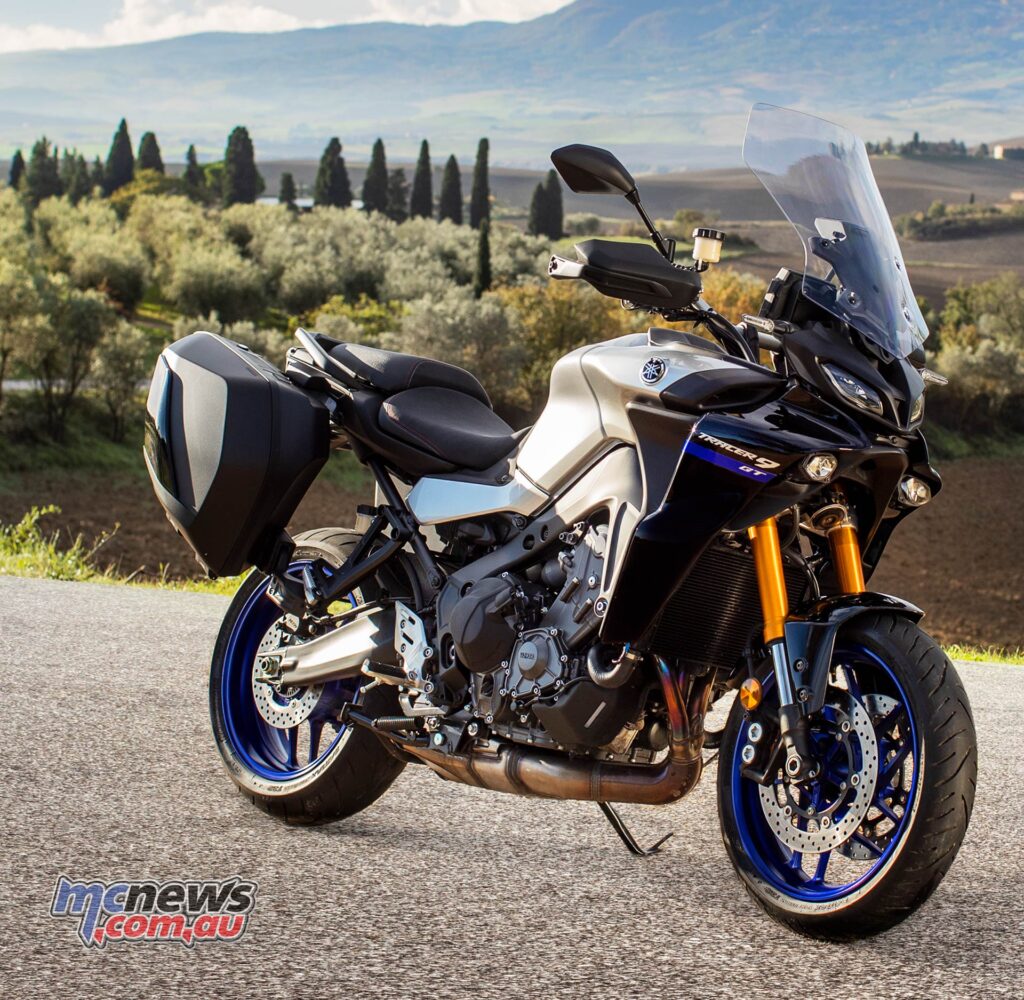
Overseas markets will get two models, the Tracer 9, and Tracer 9 GT. Here in Australia YMA have chosen to only bring in the fully featured Tracer 9 GT which is expected to hit Australian streets in April, 2021.
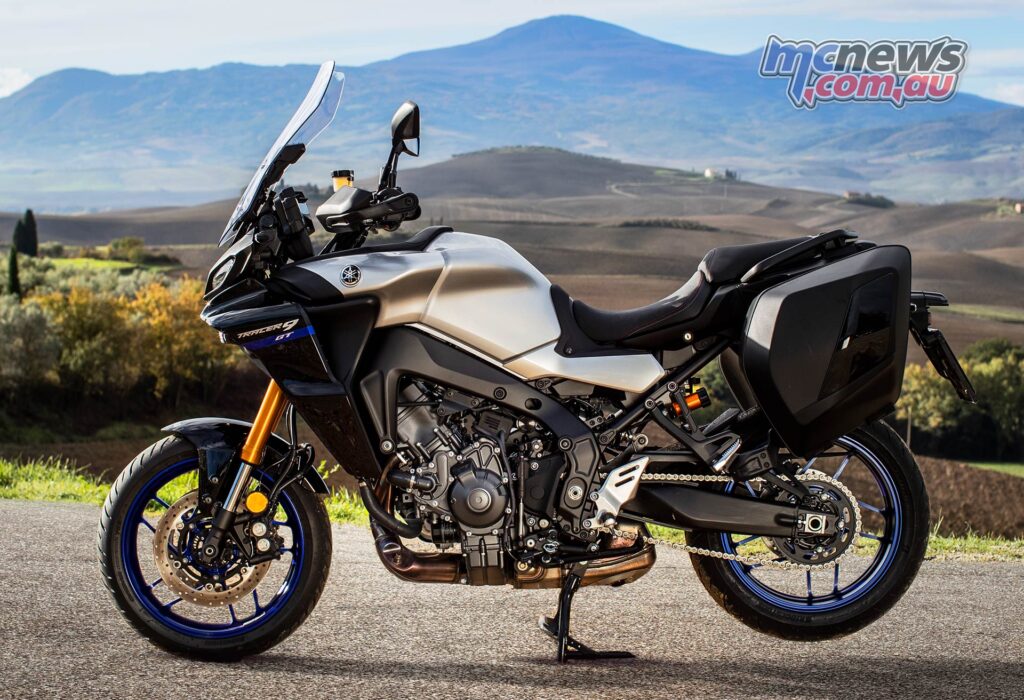
The GT comes with factory hard cases and floating carrier system, KYB electronic semi-active suspension driven by a more powerful new IMU that calculates suspension response from six-axis data, and the full gamut of electronic safety aids. Cruise control and heated grips complete what is a pretty comprehensive package.
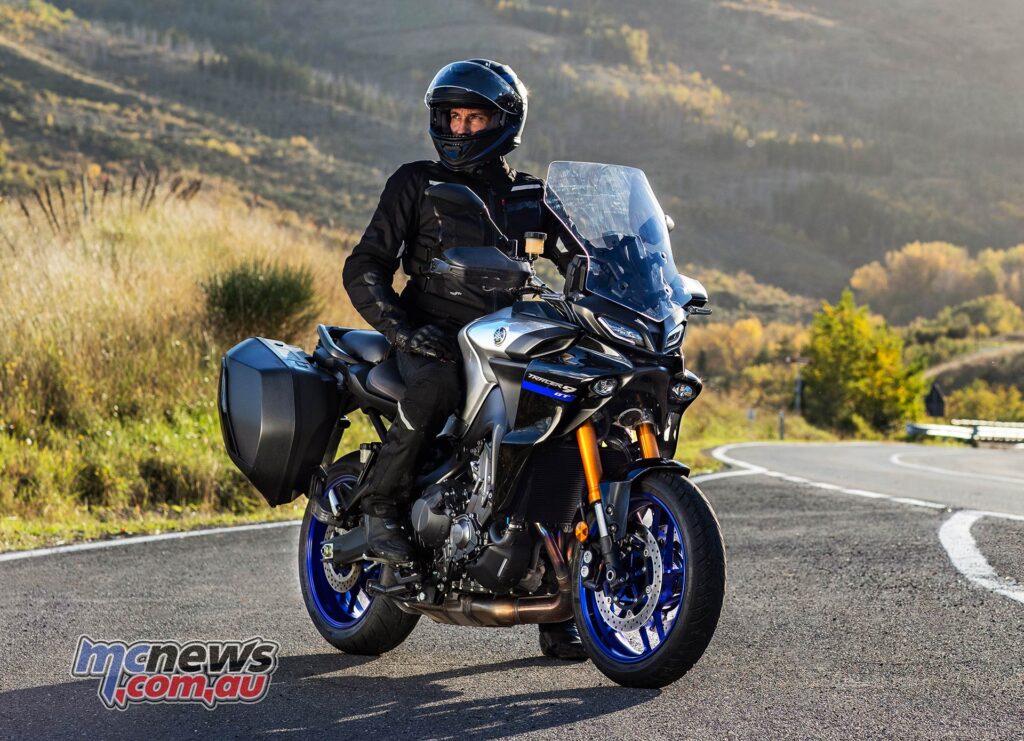
Originally developed for the R1 and never previously available in the Yamaha Sport Touring category, Yamaha’s 6-axis IMU (Inertial Measurement Unit) constantly measures acceleration in the forward-backward; up-down and left-right directions – as well as the angular velocity in the machine’s pitch, roll and yaw directions.
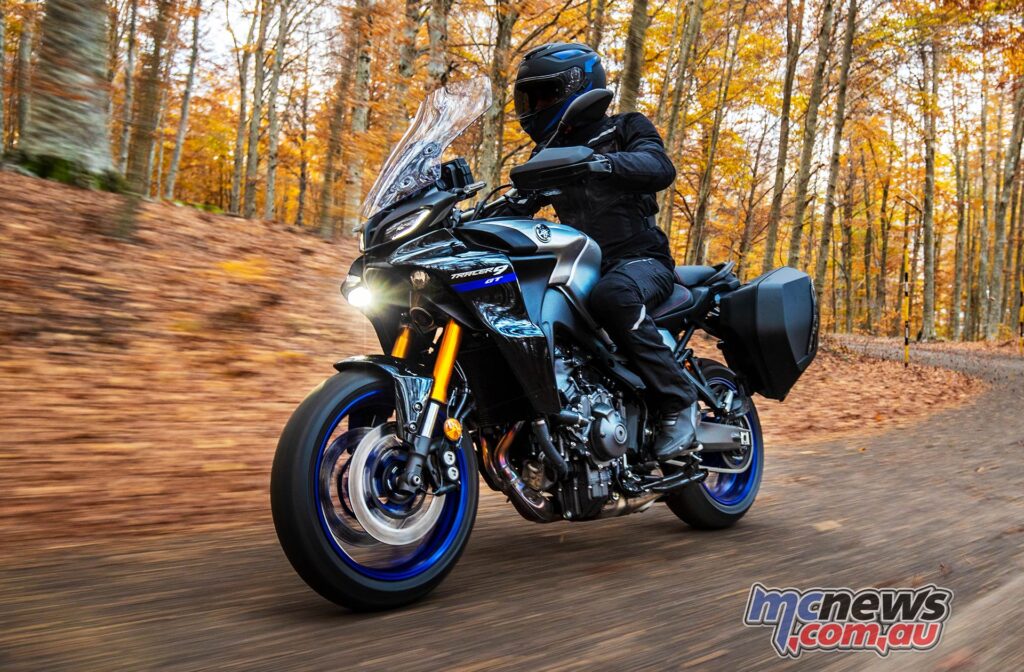
Since its introduction on the R1 in 2015, this six-axis IMU has been further developed, and the unit featured on the new Tracer 9 GT is now 50 per cent smaller and 40 per cent lighter. This high-tech IMU device constantly sends data to the ECU which computes all the data in real time, and effectively governs the Traction Control System (TCS) as well as its Slide Control System (SCS), front wheel LIFt control system (LIF) and Brake Control system (BC).
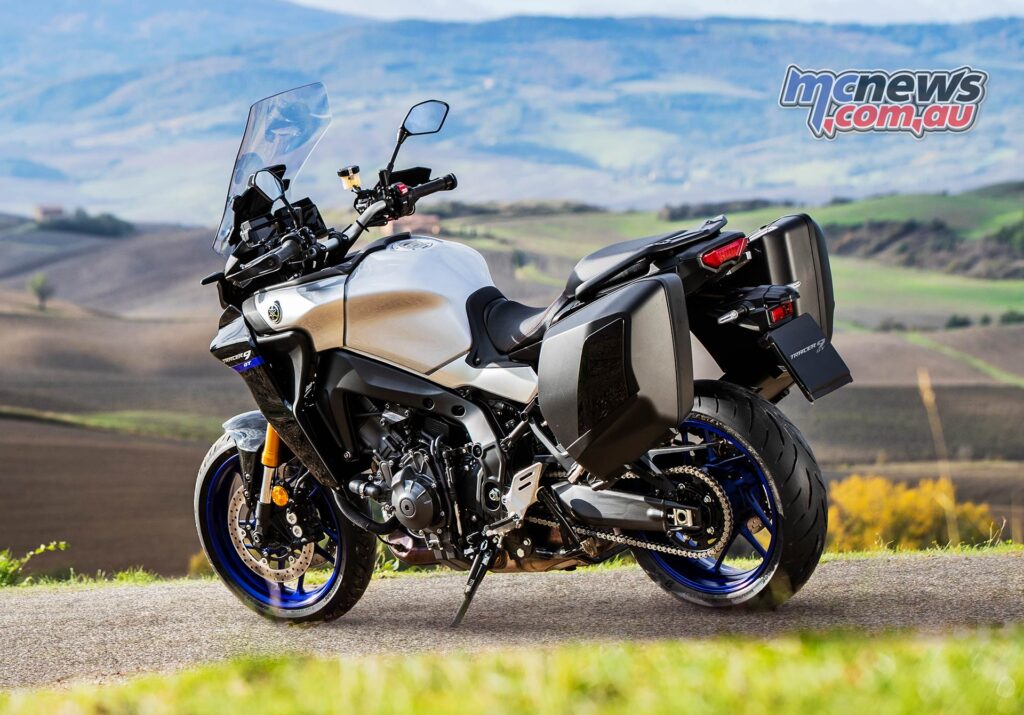
To keep the whole system easy to understand and simple to operate there are three mode settings available for the Tracer 9 GT rider. In Mode 1 the TCS, SCS and LIF are all pre-set to level 1, this being the lowest intervention level that is designed to accommodate sporty and aggressive riding. When Mode 2 is selected the TCS, SCS and LIF are all pre-set at level 2, which is moderate intervention that suits a wide variety of different conditions. Finally, Mode 3 is the manual setting option that enables the rider to select any combination from the 3 TCS settings, 3 SCS settings and off, and 3 LIF settings and off, giving a potential 48 different combinations.
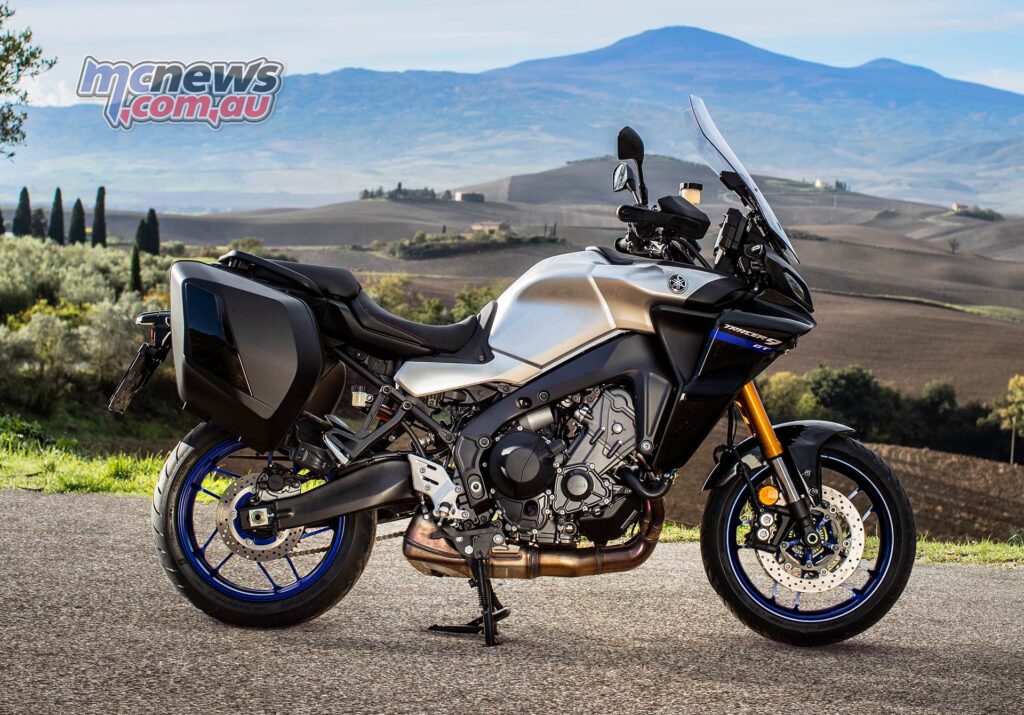
Tracer 9 GT is also equipped with a 2-Mode Brake Control (BC) system that provides added chassis stability during emergency braking situations. Data from the IMU is constantly analysed, and when excessive lever pressure is applied to the front or rear brake by the rider, the pressure is automatically modulated by the BC system.
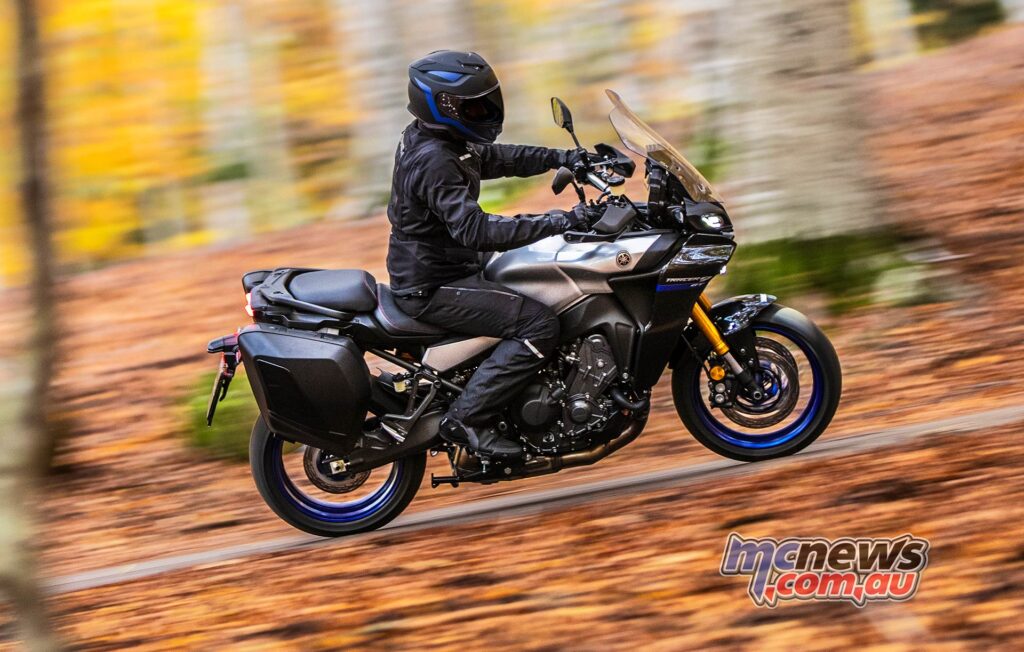
The rider can select either of two modes: BC1 is the standard ABS-active mode which prevents wheel lock-up during emergency braking in an upright, straight-line situation. When set to BC2, the system offers an even higher level of intervention by controlling brake pressure when the IMU senses that the chassis is likely to become unsettled in situations such as sudden mid-corner braking.
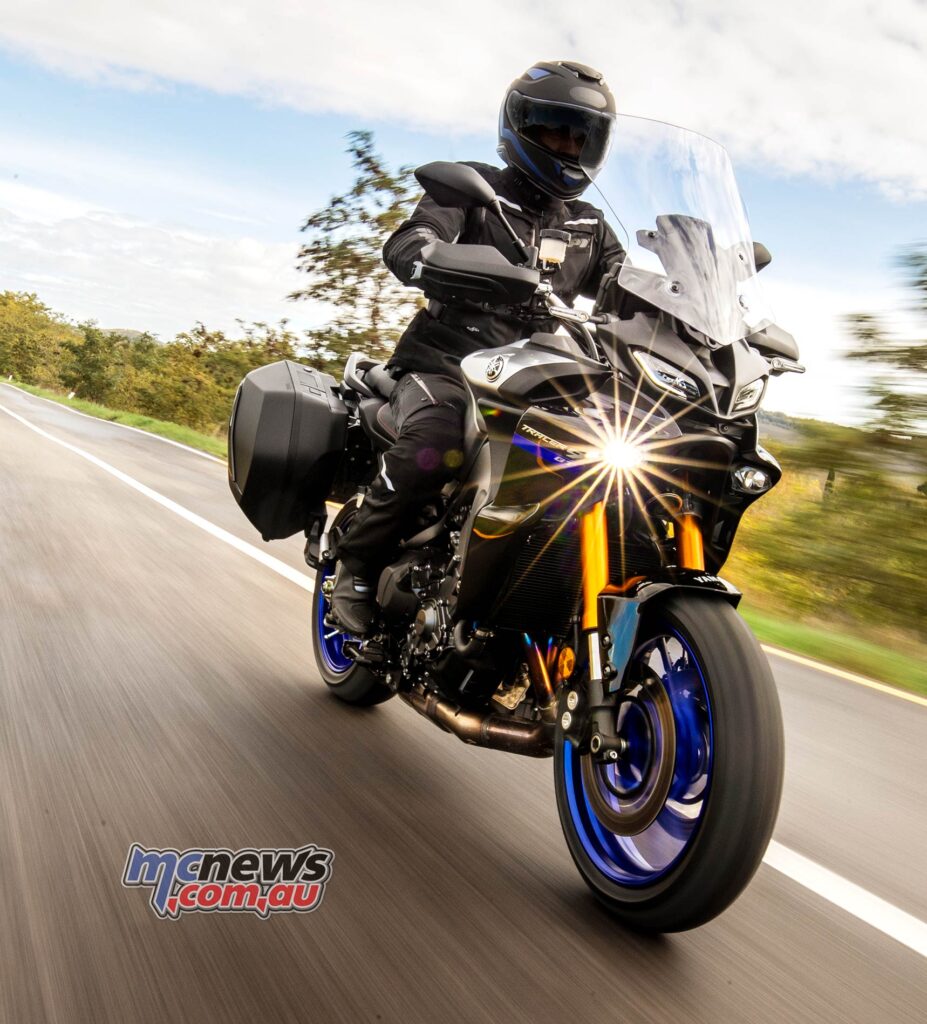
The new Kayaba suspension system is dubbed ‘KYB Active Damper System, or KADS for short. Two modes will be available, one tuned for a sporting response and one set-up for comfortable touring. The normal range of rider modes seen on most modern Yamaha models also feature on the Tracer 9 GT.
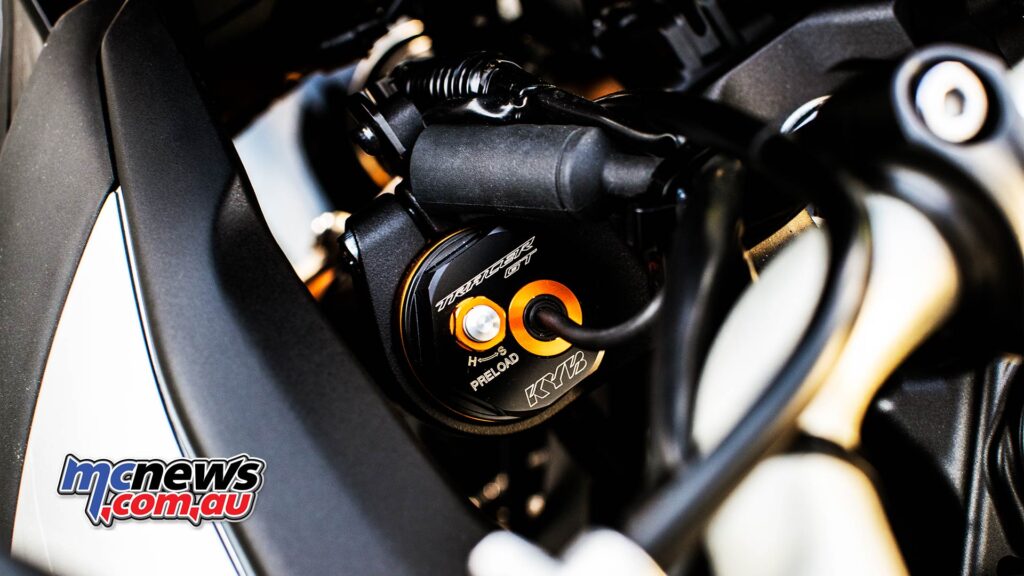
A two-way quick-shift will help the rider keep the larger 890 cc engine on the boil (up from 847 cc). The 43 cc increase achieved via a 3 mm larger bore that helps boost torque by seven per cent. The torque peaks 1500 rpm lower than before with 93 Nm at 7000 rpm. It also puts four more ponies to the ground than its predecessor with 118 horsepower at 10,000 rpm.
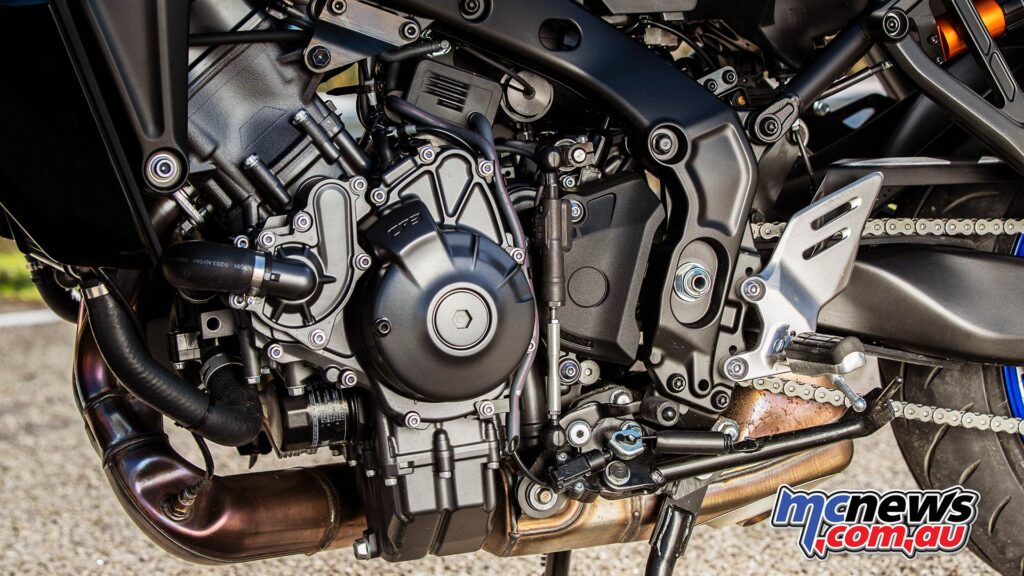
Yamaha claim they have achieved the best of both worlds with fuel economy also improved by nine per cent which extends the touring range of the 18-litre tank to over 350 kilometres. That is welcome news as when getting up it the previous model certainly liked a sip and could be drained in less than 250 km.
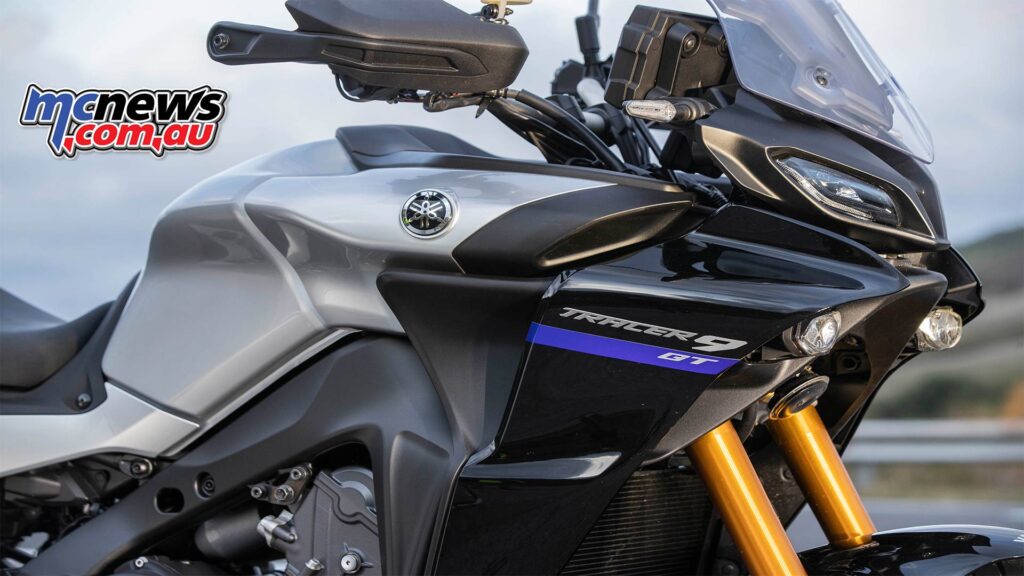
Tracer 9 GT is equipped with slightly higher 1st and 2nd gear ratios that match the new engine’s higher torque output at lower rpm, and for smoother gear-changes the shift fork has been redesigned. Modifications have also been made to the slip-assist clutch, including the use of new material for the friction plates and a revised cam angle to give a lighter lever pull and smoother shifts.
Yamaha promise the new model is also a couple of kilograms lighter, more compact and better handling. The new 890cc CP3 engine is now mounted at a more upright angle of 52.3-degrees, compared to 47.5-degrees on the previous model. These changes are claimed to improve the overall balance of the lightweight CF die-cast chassis to give a better front end feedback and grip.
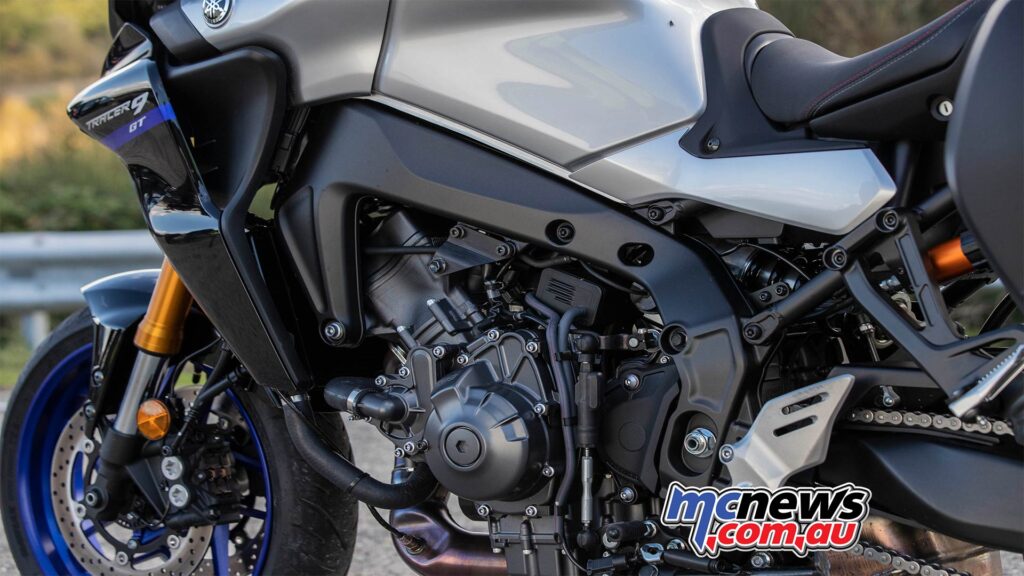
A completely redesigned lightweight aluminium swingarm pivots inside the frame’s outer structure in contrast to the previous model’s external pivot points. Although externally similar in appearance to the design used on the 2021 MT-09, the Tracer 9 swingarm is actually 60 mm longer, giving a 1,500 mm wheelbase – the same as the previous Tracer 900.
The 10-spoke SpinForged wheels and large-diameter axles are 700 grams lighter than previously, and Yamaha claim this major reduction in unsprung weight makes a positive contribution towards the bike’s agile handling, lightweight steering and responsive suspension characteristics.
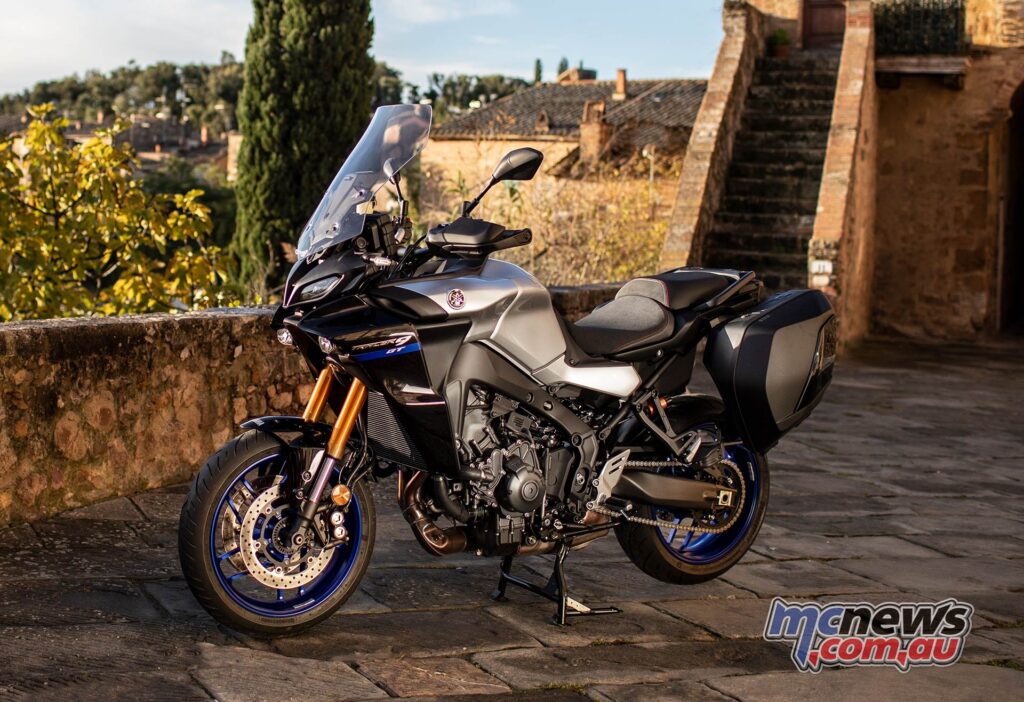
Tracer 9 GT is the first ever Yamaha Sport Touring to be equipped with a front brake featuring a R1-type radial master cylinder. Manufactured by Nissin, this high-tech supersport-class braking system features a piston that moves parallel to the brake lever travel, giving a more linear brake feel from the 298 mm disc rotors.
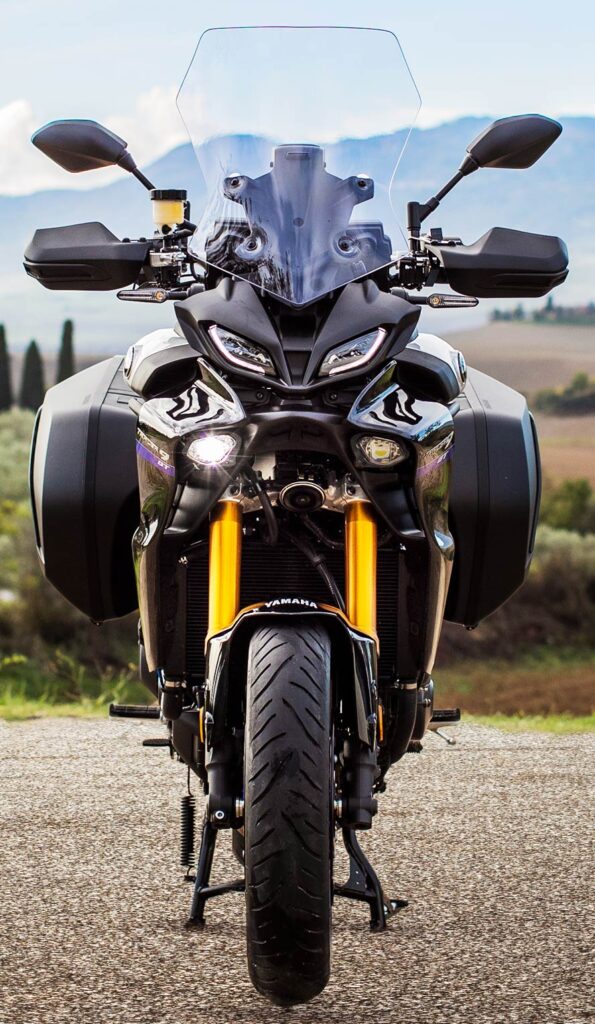
To optimise its versatility and touring capabilities the new model is designed from the outset to accommodate a total of three hard luggage cases, enabling the Tracer 9 to run with any combination of side-cases and a top case. A ‘Floating Stay’ system is used for the side cases to enhance high speed stability and isolate luggage movement on the bike, and a one-piece wraparound grab bar facilitates the fitment of a top case. With its lower weight and increased strength, the all-new chassis can handle a total payload of riders and luggage of 193kg – a 7 per cent increase in load carrying capacity.
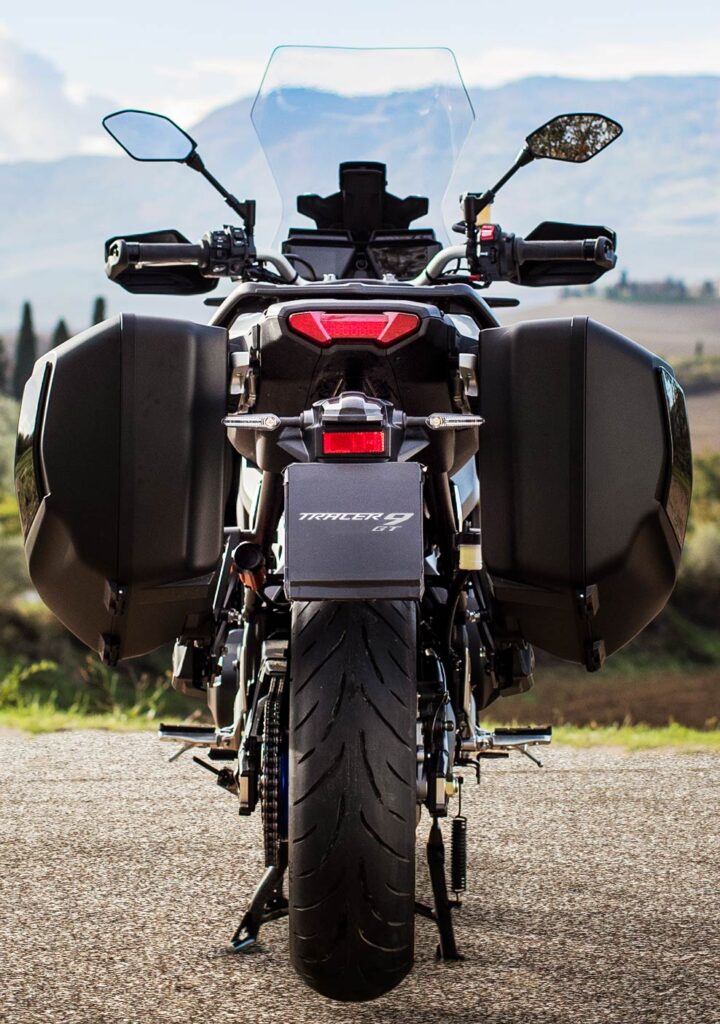
I quite like the look of the all-new twin 3.5-inch multi-function TFT displays. It is an interesting new take that I guess harks back to yesteryear when we had two clocks, one for speed and one for revs, but not we have two TFT displays that offer a myriad of information.
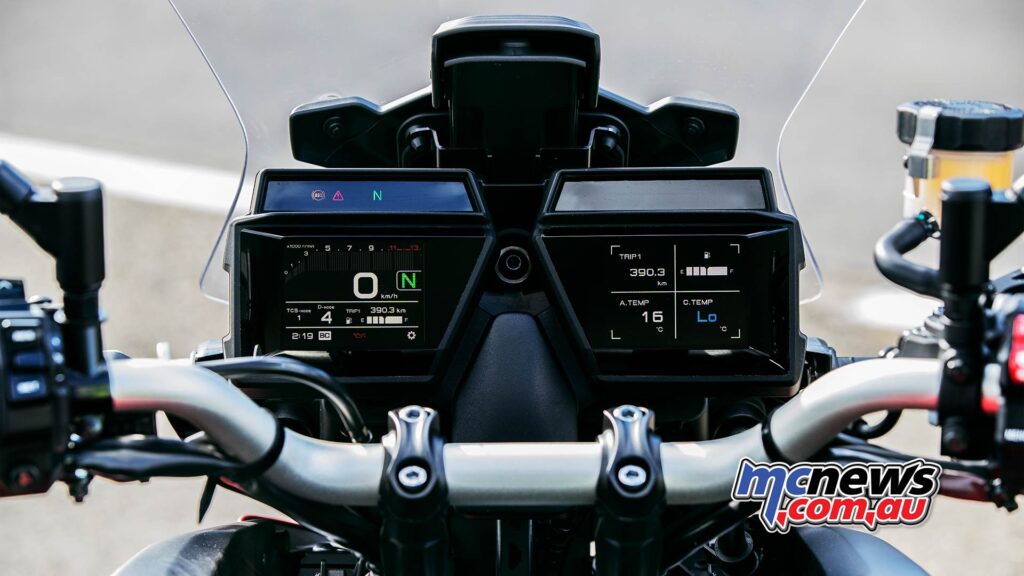
Key running information is featured on the left screen, including a multi-coloured bar-type tachometer whose colour changes as rpm rises, as well as a digital speedometer, fuel gauge, gear position and TCS mode indicator. The left screen can be switched to the TCS mode and setting display, enabling the rider to select the desired intervention mode for the electronic rider aids. Meanwhile the right screen is split into four separate sections, each one displaying a range of information such as odometer, tripmeters 1 & 2, temperature and more.
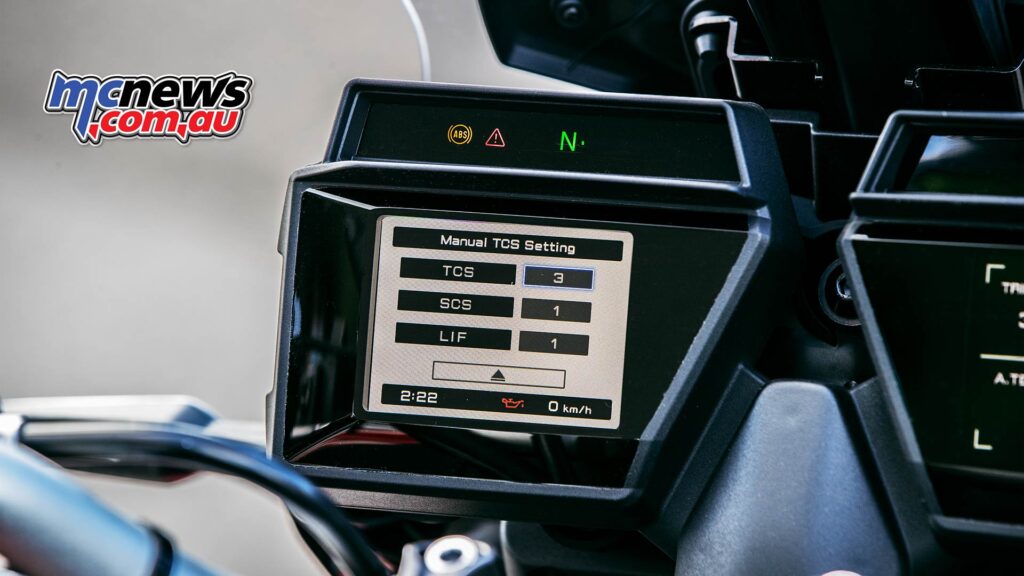
The headlights are almost hidden behind shrouds which makes for an interesting new look alongside LED lighting throughout. Tracer 9 GT even gets cornering functionality with brightness of an extra LED side light increased with the lean angle.
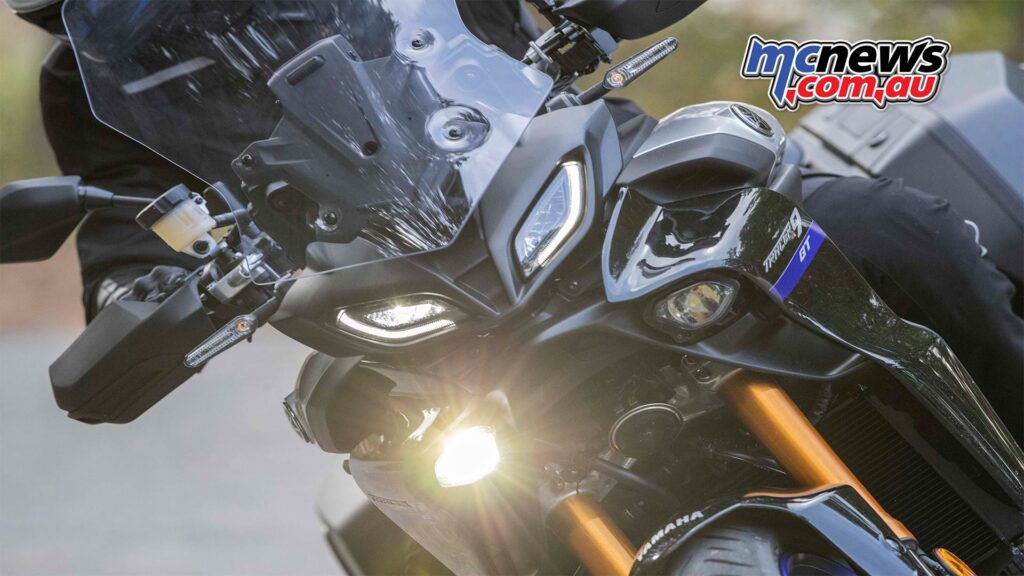
The newly developed rider’s seat is mounted 15mm lower than the previous model, and features a simple tool-less two-position height adjuster. Further changes to the ergonomics can be made by adjusting the footrests by 15mm up or down, and the handlebar position can also be moved forwards by 9mm and upwards by 4mm by reversing the direction of the handlebar clamps, giving a total of 8 different riding positions.
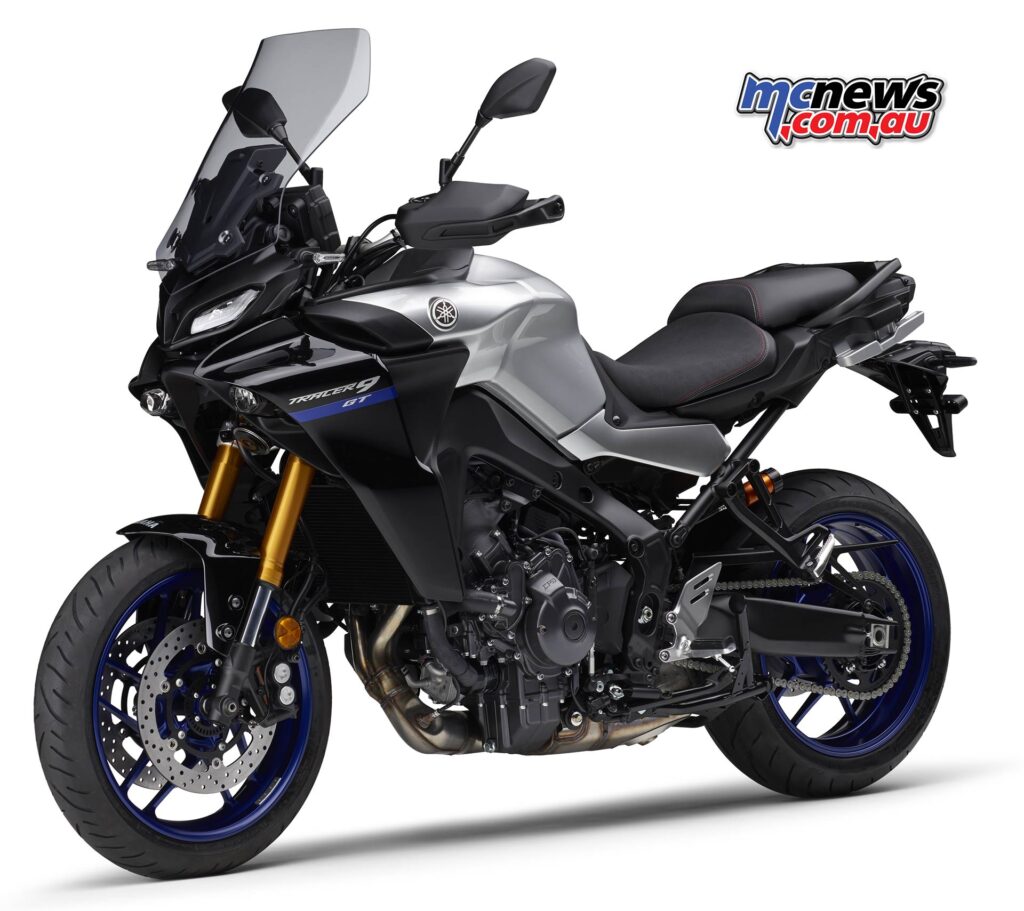
This one very comprehensive and exciting new prospect on the horizon for 2021 and if Yamaha can keep the model affordable the Tracer 9 GT could well be one of the most popular motorcycles of the new year. I can’t wait to throw a leg over it.























